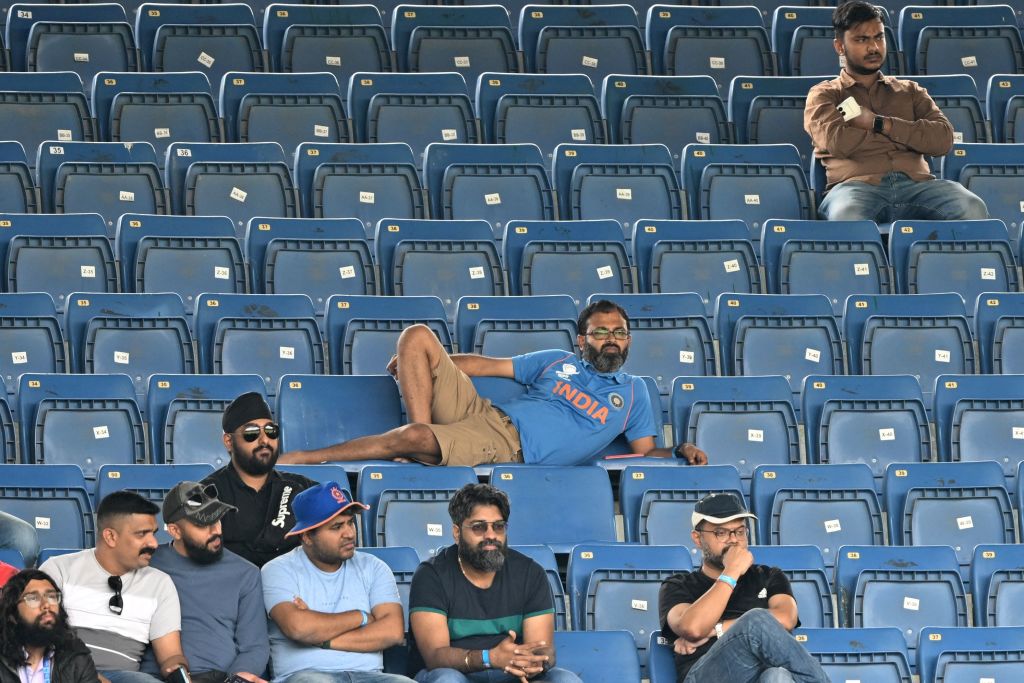- Wednesday, July 02, 2025
India’s Economic Times recently reported that cricket’s core constituency is no longer the common public but the spectators on TV and digital devices.

By: Shubham Ghosh
THE 50-over cricket World Cup 2023 is approaching its business end and while cricket-lovers are enjoying every bit of it, particularly the Indian fans as their favourite team is looking unstoppable, the tournament is also economically proving to be a major success for Indian cricket, International Cricket Council, sponsors and broadcasters.
The host nation’s superior show has helped the tournament’s cause as it has continued to generate interests and more and more people in the world’s most populous nation are turning on their televisions (TVs) or watching the matches on mobile phones. And while it has been often complained that the physical attendance at the venues have remained thin, it is unlikely to affect the goal of revenue generation as most of them comes from media rights. The Indian cricket board, the richest cricket board in the world, may look little perturbed by the projection that the current World Cup is being played before near-empty stands.
India’s Economic Times recently reported that cricket’s core constituency is no longer the common public but the spectators on TV and digital devices.
“A World Cup in India is an event chiefly consumed remotely, not in person, and it is making a lot of stakeholders an awful lot of money thanks in part to the home team sweeping all before them,” said a report by the Times UK.
Before the tournament started, 700 million Indian viewers were expected to watch the quadrennial tournament and if India go on to lift the title and the fact that the timing of the tournament is overlapping with the festival season in the country, the carnival certainly promises to be the most watched World Cup ever.
The market in India serves as the game’s main driving force globally. The Indian Premier League (IPL) is another major crowd-puller which boosts the cricket economy. According to the Times report, the Indian market contributed a whopping 85 per cent of the value of the ICC’s media rights for the period between 2014 and 2027. While the cricket’s international governing body stands to make about £410 million, the Indian board will also benefit from an undisclosed staging fee besides other spin-offs from being the organisers, it added.
In 2019, the England and Wales Cricket Board made around £60-70m by staging the 50-over World Cup, Last year, Cricket Australia made £22m from hosting the T20 World Cup. But the 2023 World Cup will break all those records.
The tournament has 18 official brand partners – many of them Indian fintechs, investment or gaming businesses, besides older staples of drinks, car and tyre companies. Commercial revenues are projected to hit around £205m.
The ICC, local organisers and broadcasters put out a media release recently about how well the World Cup was progressing as the league stage approached the halfway stage. It claimed that the first 18 games saw 542,000 spectators and almost half this number would have watched India’s five games till that point while more than 100,000 were at the game against Pakistan in Ahmedabad on October 14. It suggests that games that did not feature the host country drew average crowds of just over 20,000.
The release also mentioned the number of people watching the tournament via streaming — a new battleground among media companies.
At the IPL edition held earlier this year, more people watched games on TV than via phones or tablets but the difference was thin. TV viewership was 505m whereas 449m watched on digital platforms. It is expected that the World Cup will see something and according to one report, the first week saw an eight per cent slump in TV reach.